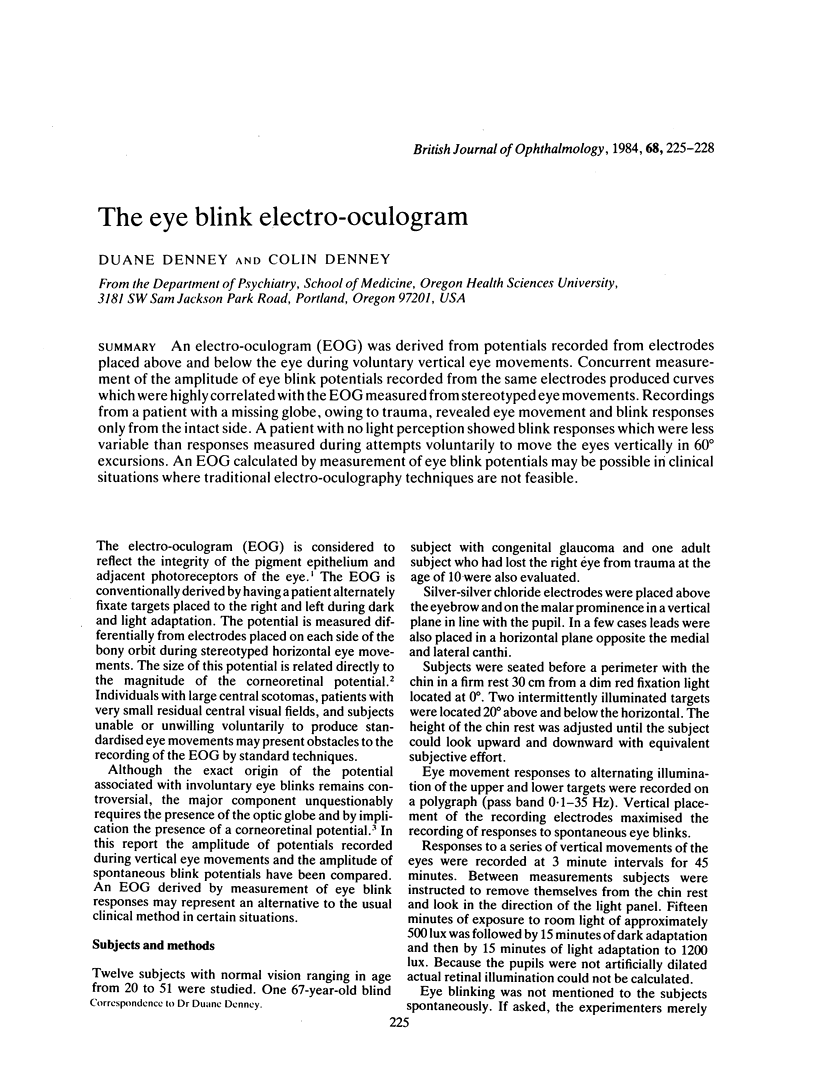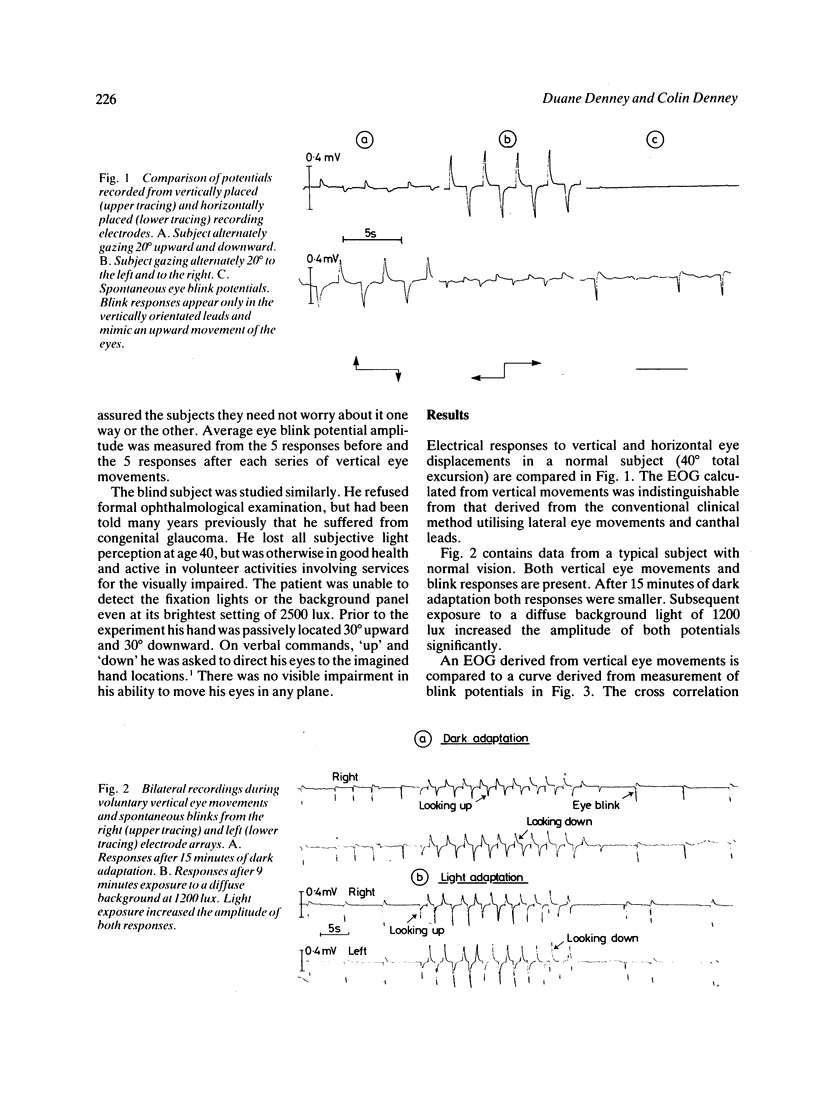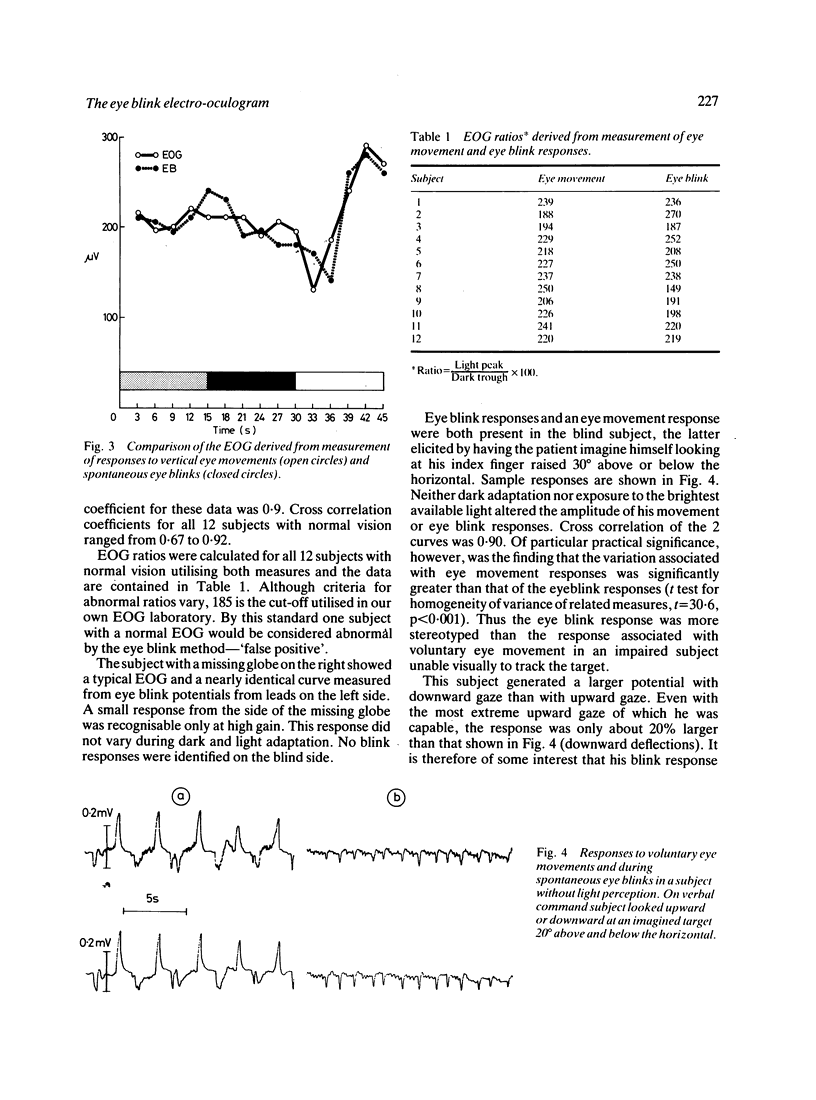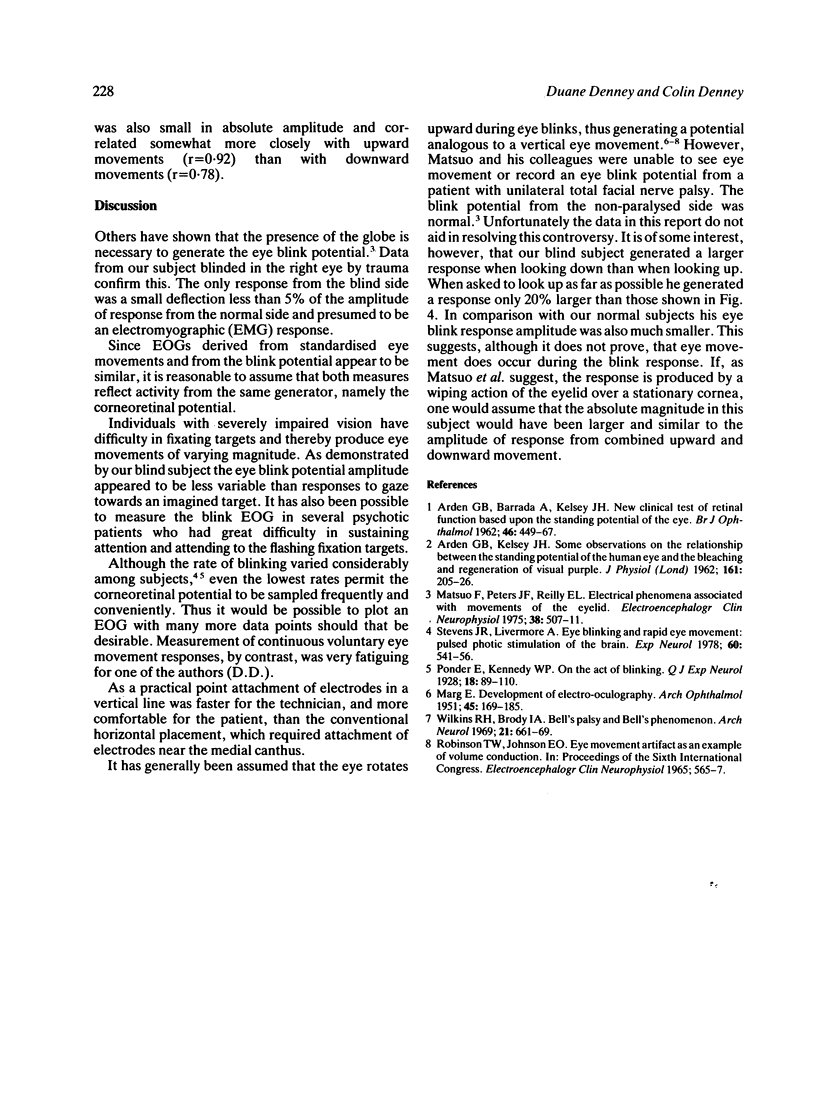Abstract
An electro-oculogram (EOG) was derived from potentials recorded from electrodes placed above and below the eye during voluntary vertical eye movements. Concurrent measurement of the amplitude of eye blink potentials recorded from the same electrodes produced curves which were highly correlated with the EOG measured from stereotyped eye movements. Recordings from a patient with a missing globe, owing to trauma, revealed eye movement and blink responses only from the intact side. A patient with no light perception showed blink responses which were less variable than responses measured during attempts voluntarily to move the eyes vertically in 60 degrees excursions. An EOG calculated by measurement of eye blink potentials may be possible in clinical situations where traditional electro-oculography techniques are not feasible.
Full text
PDF



Selected References
These references are in PubMed. This may not be the complete list of references from this article.
- ARDEN G. B., KELSEY J. H. Some observations on the relationship between the standing potential of the human eye and the bleaching and regeneration of visual purple. J Physiol. 1962 May;161:205–226. doi: 10.1113/jphysiol.1962.sp006882. [DOI] [PMC free article] [PubMed] [Google Scholar]
- Arden G. B., Barrada A., Kelsey J. H. New clinical test of retinal function based upon the standing potential of the eye. Br J Ophthalmol. 1962 Aug;46(8):449–467. doi: 10.1136/bjo.46.8.449. [DOI] [PMC free article] [PubMed] [Google Scholar]
- MARG E. Development of electro-oculography; standing potential of the eye in registration of eye movement. AMA Arch Ophthalmol. 1951 Feb;45(2):169–185. [PubMed] [Google Scholar]
- Matsuo F., Peters J. F., Reilly E. L. Electrical phenomena associated with movements of the eyelid. Electroencephalogr Clin Neurophysiol. 1975 May;38(5):507–511. doi: 10.1016/0013-4694(75)90191-1. [DOI] [PubMed] [Google Scholar]
- Stevens J. R., Livermore A., Jr Eye blinking and rapid eye movement: pulsed photic stimulation of the brain. Exp Neurol. 1978 Jul;60(3):541–556. doi: 10.1016/0014-4886(78)90009-2. [DOI] [PubMed] [Google Scholar]
- Wilkins R. H., Brody I. A. Bell's palsy and Bell's phenomenon. Arch Neurol. 1969 Dec;21(6):661–662. doi: 10.1001/archneur.1969.00480180117012. [DOI] [PubMed] [Google Scholar]


